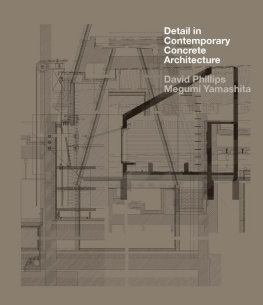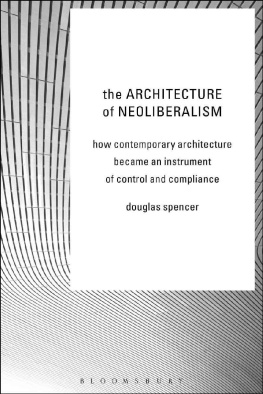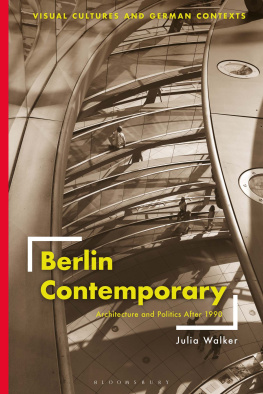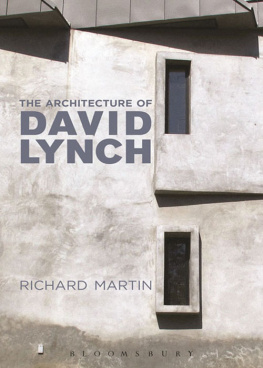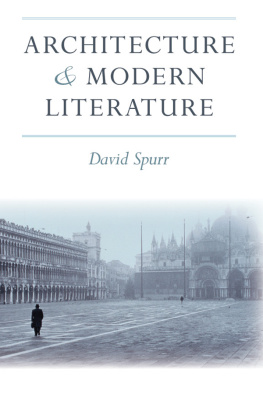Phillips David - Detail in Contemporary Concrete Architecture
Here you can read online Phillips David - Detail in Contemporary Concrete Architecture full text of the book (entire story) in english for free. Download pdf and epub, get meaning, cover and reviews about this ebook. City: London, year: 2012, publisher: Laurence King Publishing, genre: Romance novel. Description of the work, (preface) as well as reviews are available. Best literature library LitArk.com created for fans of good reading and offers a wide selection of genres:
Romance novel
Science fiction
Adventure
Detective
Science
History
Home and family
Prose
Art
Politics
Computer
Non-fiction
Religion
Business
Children
Humor
Choose a favorite category and find really read worthwhile books. Enjoy immersion in the world of imagination, feel the emotions of the characters or learn something new for yourself, make an fascinating discovery.
- Book:Detail in Contemporary Concrete Architecture
- Author:
- Publisher:Laurence King Publishing
- Genre:
- Year:2012
- City:London
- Rating:3 / 5
- Favourites:Add to favourites
- Your mark:
- 60
- 1
- 2
- 3
- 4
- 5
Detail in Contemporary Concrete Architecture: summary, description and annotation
We offer to read an annotation, description, summary or preface (depends on what the author of the book "Detail in Contemporary Concrete Architecture" wrote himself). If you haven't found the necessary information about the book — write in the comments, we will try to find it.
Detail in Contemporary Concrete Architecture — read online for free the complete book (whole text) full work
Below is the text of the book, divided by pages. System saving the place of the last page read, allows you to conveniently read the book "Detail in Contemporary Concrete Architecture" online for free, without having to search again every time where you left off. Put a bookmark, and you can go to the page where you finished reading at any time.
Font size:
Interval:
Bookmark:
Detail in Contemporary Concrete Architecture Published in 2012 by Laurence King Publishing Ltd 361373 City Road London EC1V 1LR e-mail: www.laurenceking.com Copyright Text 2012 David Phillips and Megumi Yamashita All rights reserved. No part of this publication may be reproduced or transmitted in any form or by any means, electronic or mechanical, including photocopy, recording, or any information storage or retrieval system, without permission in writing from the publisher. A catalogue record for this book is available from the British Library ISBN: 978 1 78067 009 6 Designed by Hamish Muir Illustrations by Advanced Illustrations Limited Picture Research by Sophia Gibb Printed in China Detail in Contemporary Concrete ArchitectureDavid Phillips and Megumi YamashitaLaurence King PublishingContents Sunset Chapel, Acapulco, Guerrero, Mexico Acropolis Museum, Athens, Greece Darwin Centre, London, UK Nottingham Contemporary, Nottingham, UK The Hepworth Wakefield, West Yorkshire, UK Oriel Mostyn Gallery, Llandudno, North Wales, UK Masdar Institute, Masdar, Abu Dhabi, United Arab Emirates Frontier Project, Rancho Cucamonga, California, USA Extension to the Historisches Museum, Bern, Switzerland Volcano Interpretation Center, Capelinhos, Faial Island, Azores, Portugal An Gaelras Irish Language and Cultural Centre, Derry, Northern Ireland Museum of Polish Aviation Krakw, Poland Teshima Art Museum, Teshima, Kagawa, Japan Casa das Histrias Paula Rego, Cascais, Portugal Grand Rapids Art Museum, Grand Rapids, Michigan, USA MUMUTH - Haus fr Musik und Musiktheater, Graz, Austria Fichtelberg Mountain Hut, Saxony, Germany Casa de Hormign, Mar Azul, Buenos Aires, Argentina 102 Dwellings in Carabanchel, Madrid, Spain MON Factory / House, Kyoto, Japan The Truffle, Costa de Morte, Spain Villa Lokaator, Paldiski, Estonia Alam Family Residence, Jakarta, Indonesia House Equanimity, Northampton, Pennsylvania, USA Rainy / Sunny House, Tokyo, Japan House F, Luxembourg, Rameldange Springwater, Seaforth, Sydney, Australia FOSC House, San Pedro, Chile Toro Canyon Residence, Santa Barbara, USA Colour Concrete House, Yokohama, Japan House in Kohoku, Yokohama, Japan Merricks House, Mornington Peninsula, Victoria, Australia Vodafone Building, Porto, Portugal Hydro-Electric Power Station, Kempten, Germany Mint Hotel Tower of London, City of London, UK Crematorium Heimolen, Sint-Niklaas, Belgium Hmeenlinna Provincial Archive, Hmeenlinna, Finland Hotel am Domplatz, Linz, Austria Santa Monica Boulevard Transit Parkway Wall, Los Angeles, USA Torres de Hrcules, Los Barrios, Cdiz, Spain Bodleian Book Storage Facility, South Marston, Swindon, UK Aon Insurance Headquarters, Dar es Salaam, Tanzania Schulheim Rossfeld Renovation and Extension, Bern, Switzerland Four Boxes Gallery, Skive, Denmark Music House for Instrumental Practice and Choral Rehearsal, Benedictine Einsiedeln Abbey, Einsiedeln, Switzerland Indian Institute of Management, Ahmedabad, Gujarat, India Tama Art University Library, Hachioji, Tokyo, Japan Childrens Toy Library, Bonneuil sur Marne, France Evelyn Grace Academy, London, UK Introduction Concrete, despite its image as a modern material, was invented by the Romans. Its use in structures such as the Pantheon in Rome allowed for the first time the formation of large spans. Despite concretes manifold qualities its early use was limited, and, like many other technologies, after the fall of the Roman Empire it was nearly forgotten. Over the next thousand years the use of concrete declined to almost nothing and extant examples of concrete as a construction material from this period are infrequent.
Published in 2012 by Laurence King Publishing Ltd 361373 City Road London EC1V 1LR e-mail: www.laurenceking.com Copyright Text 2012 David Phillips and Megumi Yamashita All rights reserved. No part of this publication may be reproduced or transmitted in any form or by any means, electronic or mechanical, including photocopy, recording, or any information storage or retrieval system, without permission in writing from the publisher. A catalogue record for this book is available from the British Library ISBN: 978 1 78067 009 6 Designed by Hamish Muir Illustrations by Advanced Illustrations Limited Picture Research by Sophia Gibb Printed in China Detail in Contemporary Concrete ArchitectureDavid Phillips and Megumi YamashitaLaurence King PublishingContents Sunset Chapel, Acapulco, Guerrero, Mexico Acropolis Museum, Athens, Greece Darwin Centre, London, UK Nottingham Contemporary, Nottingham, UK The Hepworth Wakefield, West Yorkshire, UK Oriel Mostyn Gallery, Llandudno, North Wales, UK Masdar Institute, Masdar, Abu Dhabi, United Arab Emirates Frontier Project, Rancho Cucamonga, California, USA Extension to the Historisches Museum, Bern, Switzerland Volcano Interpretation Center, Capelinhos, Faial Island, Azores, Portugal An Gaelras Irish Language and Cultural Centre, Derry, Northern Ireland Museum of Polish Aviation Krakw, Poland Teshima Art Museum, Teshima, Kagawa, Japan Casa das Histrias Paula Rego, Cascais, Portugal Grand Rapids Art Museum, Grand Rapids, Michigan, USA MUMUTH - Haus fr Musik und Musiktheater, Graz, Austria Fichtelberg Mountain Hut, Saxony, Germany Casa de Hormign, Mar Azul, Buenos Aires, Argentina 102 Dwellings in Carabanchel, Madrid, Spain MON Factory / House, Kyoto, Japan The Truffle, Costa de Morte, Spain Villa Lokaator, Paldiski, Estonia Alam Family Residence, Jakarta, Indonesia House Equanimity, Northampton, Pennsylvania, USA Rainy / Sunny House, Tokyo, Japan House F, Luxembourg, Rameldange Springwater, Seaforth, Sydney, Australia FOSC House, San Pedro, Chile Toro Canyon Residence, Santa Barbara, USA Colour Concrete House, Yokohama, Japan House in Kohoku, Yokohama, Japan Merricks House, Mornington Peninsula, Victoria, Australia Vodafone Building, Porto, Portugal Hydro-Electric Power Station, Kempten, Germany Mint Hotel Tower of London, City of London, UK Crematorium Heimolen, Sint-Niklaas, Belgium Hmeenlinna Provincial Archive, Hmeenlinna, Finland Hotel am Domplatz, Linz, Austria Santa Monica Boulevard Transit Parkway Wall, Los Angeles, USA Torres de Hrcules, Los Barrios, Cdiz, Spain Bodleian Book Storage Facility, South Marston, Swindon, UK Aon Insurance Headquarters, Dar es Salaam, Tanzania Schulheim Rossfeld Renovation and Extension, Bern, Switzerland Four Boxes Gallery, Skive, Denmark Music House for Instrumental Practice and Choral Rehearsal, Benedictine Einsiedeln Abbey, Einsiedeln, Switzerland Indian Institute of Management, Ahmedabad, Gujarat, India Tama Art University Library, Hachioji, Tokyo, Japan Childrens Toy Library, Bonneuil sur Marne, France Evelyn Grace Academy, London, UK Introduction Concrete, despite its image as a modern material, was invented by the Romans. Its use in structures such as the Pantheon in Rome allowed for the first time the formation of large spans. Despite concretes manifold qualities its early use was limited, and, like many other technologies, after the fall of the Roman Empire it was nearly forgotten. Over the next thousand years the use of concrete declined to almost nothing and extant examples of concrete as a construction material from this period are infrequent.
In 1756 the process of making cement, the key material for making concrete, was essentially reinvented. This was the work of the pioneering British engineer John Smeaton, who conducted experiments with hydraulic lime and a combination of pebbles and powdered brick as aggregate. Through the nineteenth century concrete continued to be developed as a structural construction material. The French architect Auguste Perret was a key figure in the adoption of concrete as a key construction material by the modern movement. Starting in the early twentieth century he, along with his brother Gustave, pioneered many of the techniques that characterize contemporary concrete construction. This leading role was obscured in the post-war period, the beautiful St.
Josephs Church at Le Havre and the reconstruction of his city being overshadowed by the dramatic work of his former employee Corbusier. The influence of Corbusier allowed concrete to become the pre-eminent modern material. The use of concrete as a raw unfinished material was a central theme of much of Perrets post-war work; and the influence can still be seen clearly in contemporary projects. Modern concrete differs from the material used by the Romans in a couple of important ways. The Roman material was formed as a dry mix that was layered up in the wall or other structure it was a part of. Its strength was almost entirely in compression and it did not make use of any additional internal strengthening.
In contrast, contemporary concrete is placed into formwork in a fluid state. This allows the concrete to be formed into complex shapes. Modern concrete also makes extensive use of internal steel reinforcement, giving the finished concrete strength in tension in addition to compressive strength. Today concrete is the most used man-made material in the world. At every scale and in every area of building design concrete fulfils diverse functions. We have buildings where concrete is almost the only material used, others where it performs a traditional structural role and yet others where it forms a delicate skin.
The projects in this book bring together, from around the world, a range of approaches to building with concrete. In these projects we can see concrete used in many varied ways: concrete as structure, concrete as enclosure and concrete as decoration. There are large public buildings and tiny structures that are no more than huts. In each case concretes unique properties have been utilized differently. Because concrete is both fluid and rigid there are two stages to the design of many details. We can think of these as the detail of construction and the detail of use.
Architectural details explain to us how materials come together. It is in these junctions that we can observe and then understand the nature of the structure. Many of the details are very simple, essentially because concrete as a construction material is a very simple material. Concretes ability to record as an impression the form of an element that is now absent allows it to become a transitional material recalling the past in the present. We can see concrete being used in this way in the raw simplicity of AFFs forest hut (p76). At first sight it mimics the simple wooden structure that it replaces.
It has the quality of a Dada found object, having the unrefined appearance of something that has just occurred. We then discover that it contains in its form a history, a reflection of the past. Concrete gives the architect the opportunity to shape the structural elements of buildings into complex shapes. De La-Hozs twin towers (p170) have a dramatic lattice-like typographic structural skin that proclaims a message across the landscape. Likewise in Caruso St Johns Nottingham Contemporary art gallery (p22), a historic narrative is etched into the buildings surface as a record of the local lace industry. The patterned surface in scalloped panels appears like a curtain just about to shimmer in the wind.
Concretes image as a hard material is challenged by many of the projects in this book. The delicate eau-de-nil patina that wraps the skin of Pezo von Ellrichshausens FOSC House (p120) confers on it the quality of a ripe fruit. Just as softness can be found in concrete so too can hardness. Souto de Mouras gallery for the display of the painter Paula Regos work (p62) also uses a coloured surface, but here the effect is of a tough mineral density. The red pyramid roofs are evocative of objects fashioned from the earth. At the Mostyn Gallery (p30) the crystallinefaceted cavern that Ellis Williams has designed as the central axis has a majestic power that both complements the original gallery spaces and establishes a new language for the buildings circulation.
Next pageFont size:
Interval:
Bookmark:
Similar books «Detail in Contemporary Concrete Architecture»
Look at similar books to Detail in Contemporary Concrete Architecture. We have selected literature similar in name and meaning in the hope of providing readers with more options to find new, interesting, not yet read works.
Discussion, reviews of the book Detail in Contemporary Concrete Architecture and just readers' own opinions. Leave your comments, write what you think about the work, its meaning or the main characters. Specify what exactly you liked and what you didn't like, and why you think so.

